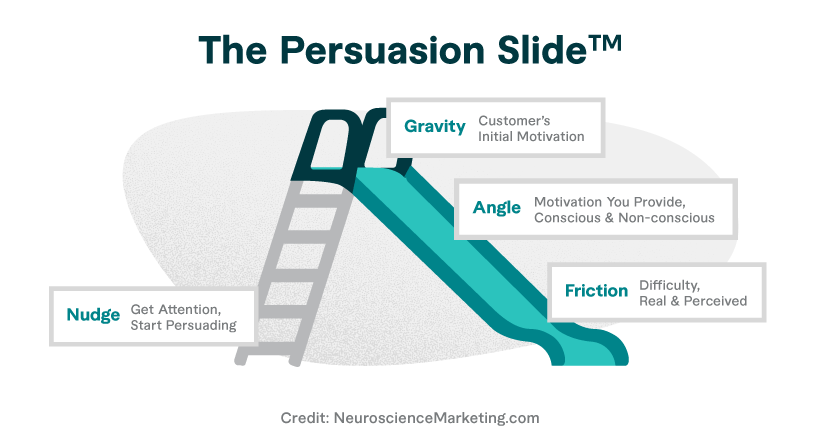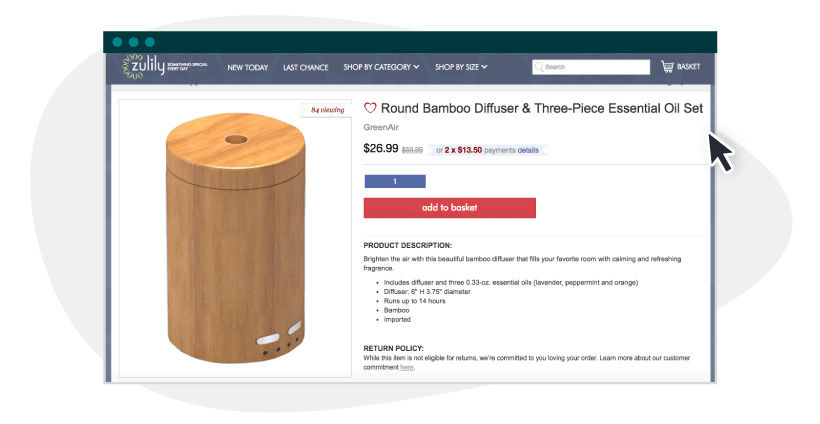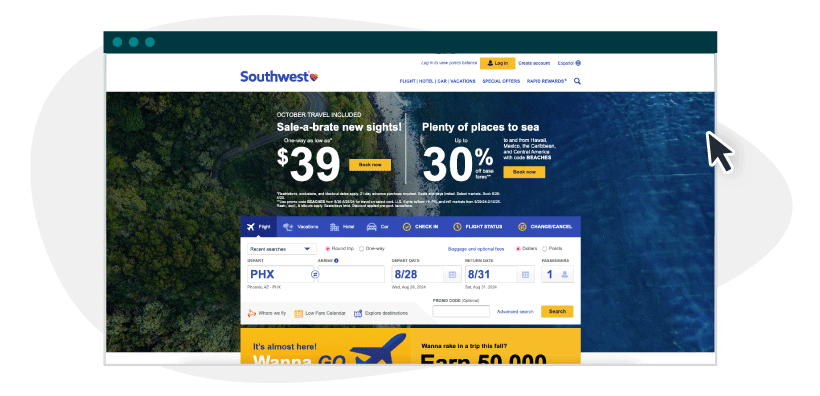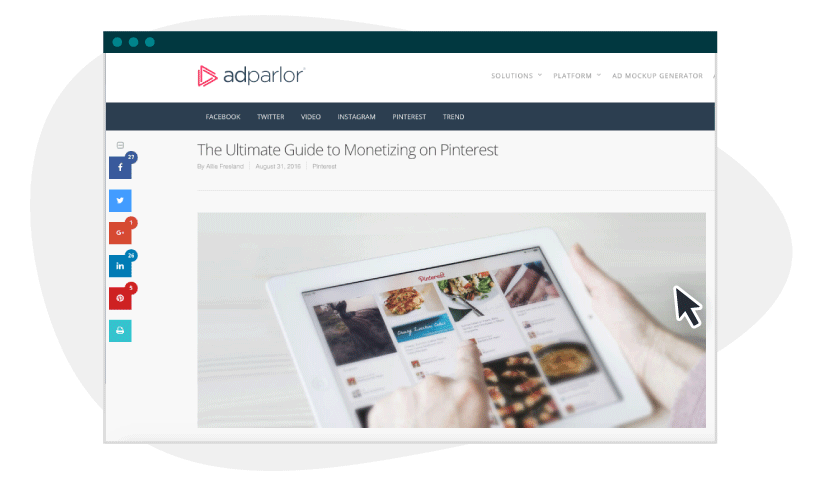There are six elements of persuasion that marketers can use to improve audience reception and actions: reciprocity, scarcity, authority, consistency, liking, and consensus. By applying one or more of these persuasive elements effectively, your messaging can boost conversions and sales.
What is it you want your content to do? Yes, we’re all seeking to generate brand awareness, boost brand loyalty, and educate and engage consumers — but ultimately, the whole point of doing any of this is to persuade people that your brand is the best man for the job.
When Customer X needs Product or Service Y, you want them to think of you.
How to Increase Your Content Persuasion
It’s about content persuasion, and it all starts with a nudge.
According to Roger Dooley of NeuroscienceMarketing.com, persuasion in a marketing context looks like this:

So what tactics push people down the persuasion slide, and can you incorporate them into your content?
Yes. Good content persuasion happens through psychological triggers. This concept was validated in 1984, when Dr. Robert Cialdini, a researcher, psychologist, and professor based in Arizona, developed six scientifically proven elements of persuasion, published in “Influence: The Psychology of Persuasion.”
The six elements are:
- Reciprocity
- Scarcity
- Authority
- Consistency
- Liking
- Consensus
While not targeted specifically to content marketers, these elements apply to content marketing and are the variable between conversion-driven and lame-duck content. Let’s explore each principle, along with examples.
The 6 Elements of Persuasion
1. Reciprocity
People feel an obligation to purchase something if they are given something for free from a brand. As Cialdini told eBrand Media, “The gifts do not have to be expensive or even material; information and favors can work.”
Content applications:
- Deliver exclusive content to your subscribers
- Allow top-tier guest posters to write content for your brand’s owned channels
- Offer an eBook, white paper, or webinar at no cost. Give people a few of your trade secrets and ask for nothing in return.
2. Scarcity
People are enticed by things that there are few of. Playing hard to get is not only applicable in the dating world, but also in business. As John Quelch wrote in Harvard Business Review, “By using the illusion of scarcity, [marketers] can accelerate demand. This false scarcity encourages us to buy sooner and perhaps to buy more than normal.”
Content applications:
- Create seasonally focused content, such as landing pages, that aggregate your products that are only available for a limited time
- Write titles with time-based language, such as: “Why X Will Fall off the Face of the Earth in 2017” or “Why X Should Matter to You Now.”
- Retailers can relay a “going going gone” message by showing the number of products left or people viewing an item. Zulily does this by showing consumers how many others are viewing the same product:
3. Authority
Consumers do business with brands that are known and respected. As eBrand noted, “When people are uncertain, they look outside themselves for information to guide their decisions.” Long story short: Authority can help persuade people.
Content applications:
- Encourage your brand’s C-suite to pen content on your blog or get bylines on external publications (Hint: Get a ghostwriter to help)
- Launch a co-branding partnership — create a wish list of brands that aren’t direct competitors and reach out to them to collaborate on a unique content campaign
- Make sure you have an About Us page
- Incorporate reviews and testimonials from legitimate, recognized people of power in your industry
- Invite social influencers to write for your brand
- Host a Reddit AMA (Ask Me Anything) featuring an authority figure from your brand — The Economist and digital editor Tom Standage did this with great success.
4. Consistency
People usually want consistency in all areas of their lives. Psychologists say we seek this consistency because it’s a shortcut to helping us make difficult decisions, and when we stick to what we know, we’re more apt to avoid disappointment and failure. As Cialdini said in the eBrand interview, “People strive for consistency in their commitments. They also prefer to follow pre-existing attitudes, values and actions.”
Content applications:
- Create an editorial calendar to standardize brand content and design outputs
- Post on consistent days and times
- Maintain brand consistency across all your content channels
Southwest Airlines is the perfect example of this. Cross-functionally, they deliver a consistent customer experience, a similar brand tone and iconography:
5. Liking
Consumers do business with people and brands they like — and are like them. Some elements that influence how people like and bond with others, taken from Cialdini’s book, include:
- Physical attractiveness: “Research has shown that we automatically assign to good-looking individuals such favorable traits as talent, kindness, honesty and intelligence.”
- Similarity: “We like people who are similar to us. This fact seems to hold true whether the similarity is in the area of opinions, personality traits, background or lifestyle.”
- Compliments: “…we tend, as a rule, to believe praise and to like those who provide it, oftentimes when it is clearly false.”
- Contact and cooperation: “…becoming familiar with something through repeated contact doesn’t necessarily cause greater liking. […we must be] working for the same goals…we must ‘pull together’ for mutual benefit.”
- Conditioning and association: “[Compliance professionals are] incessantly trying to connect themselves or their products with the things we like. Did you ever wonder what all those good-looking models are doing standing around in those automobile ads?”
Content applications:
- Encourage first-person writing, real-life references, and a casual tone on your brand’s blog
- Avoid jargon, acronyms, and stuffy business speak
- Give followers insight into your brand through real-life examples. Post social content with non-stock imagery of a “day in the life of X”
- Post employee spotlights on your brand’s owned social channels
- Avoid negativity and strive for an encouraging, mentoring voice
- Build a brand ambassador program
- Remodel your “About Us” page to include real photos of actual employees and day-to-day activities within your company. Here’s an example straight from the ClearVoice About Us page.
6. Consensus/social proof
People look to the actions of others to determine their own. This is akin to the bandwagon effect, which Investopedia defines as when “people do something primarily because other people are doing it, regardless of their own beliefs, which they may ignore or override”.
Content applications:
- Post reviews, ratings and testimonials from customers to further validate social proof of your product or service
- Include your subscriber count on lightbox blog newsletter signup forms
- Have a social toolbar on each page of your website and show actual share stats. Here’s an example from AdParlor:
Create Content That Persuades
Cialdini’s book came out in 1984, more than 30 years ago, but its six principles are just as relevant today. If you apply these elements of persuasion to your content marketing, you’ll see your conversions go up over time. But, if you’d rather work with a team that already has content persuasion expertise, ClearVoice can help. Our expert creators and storytellers can help you craft compelling content that emotionally persuades your target audience. Connect with us here.






